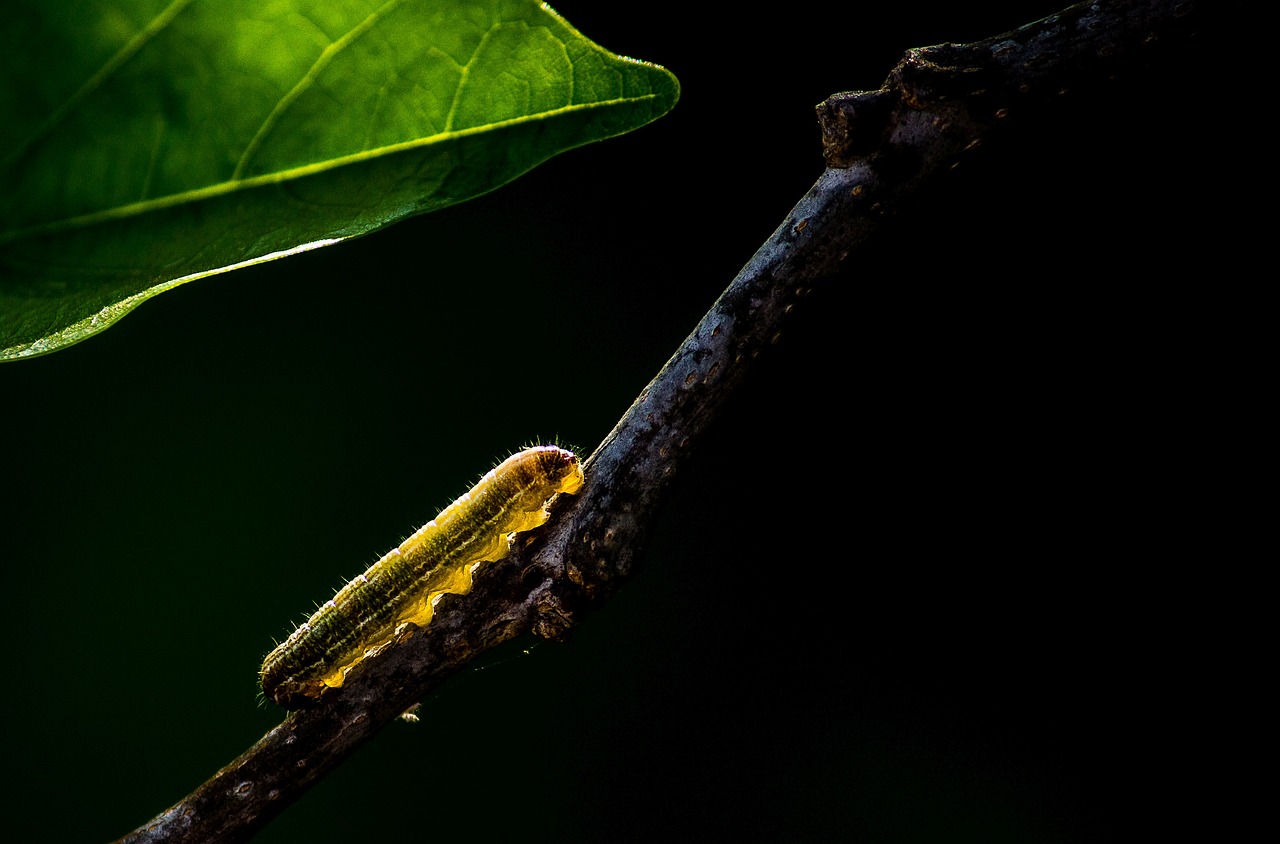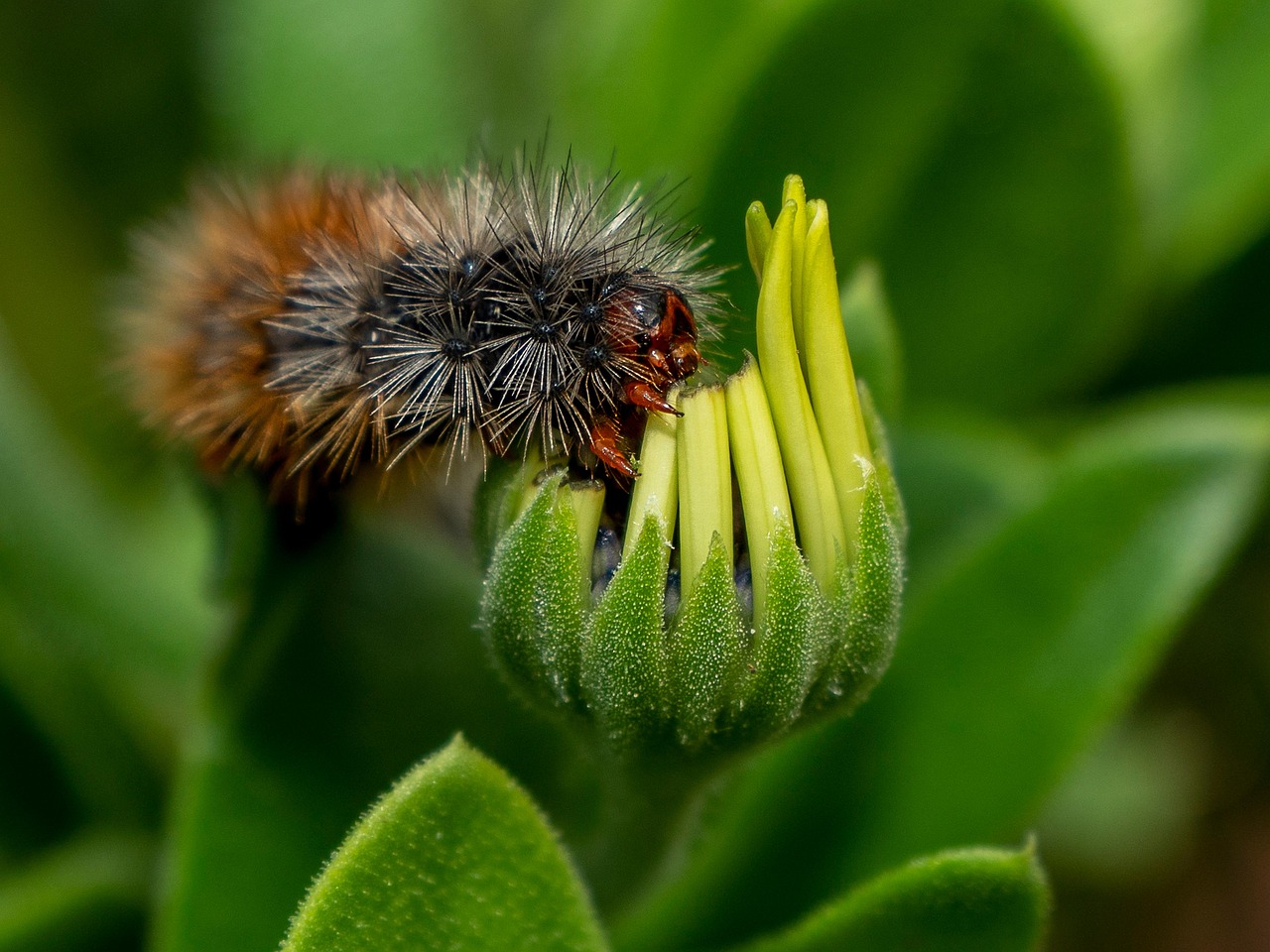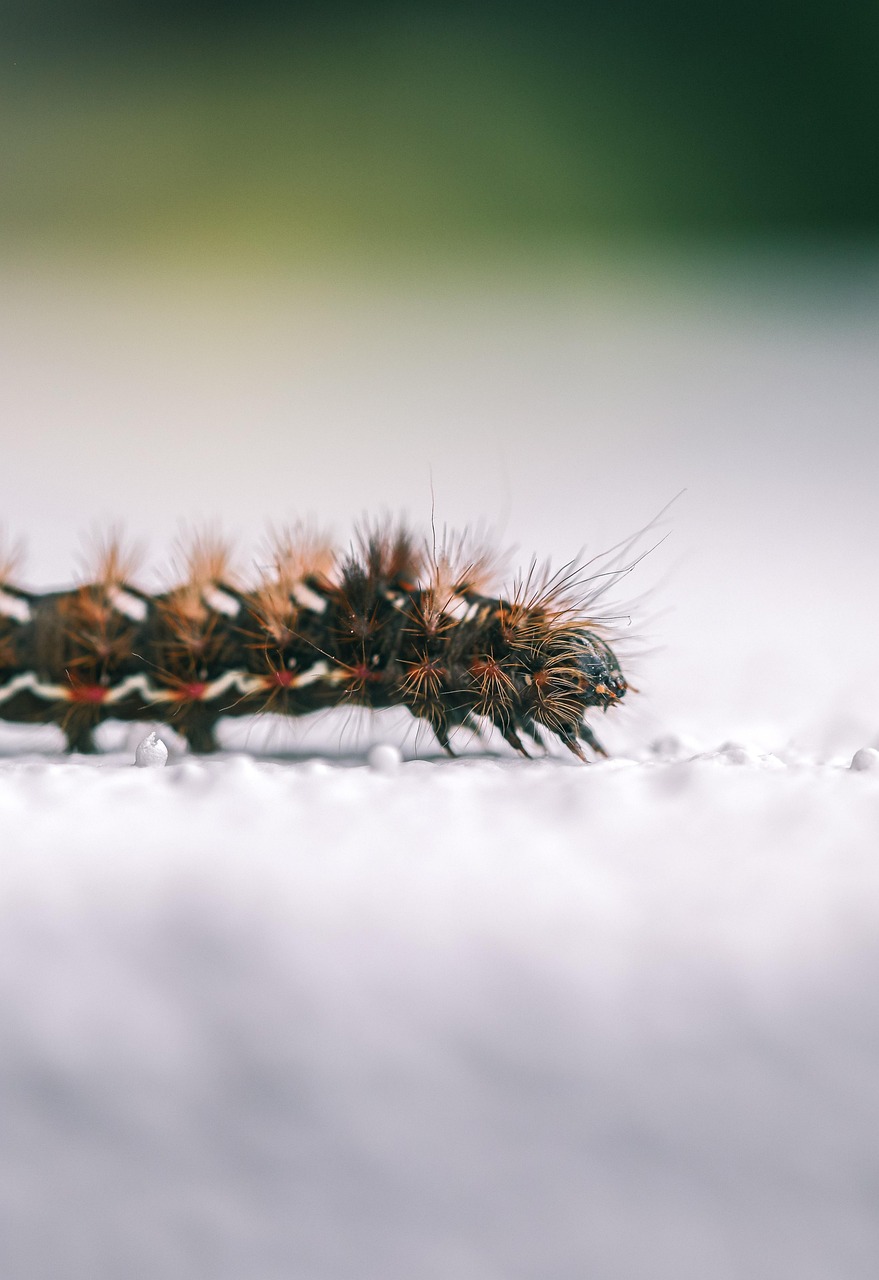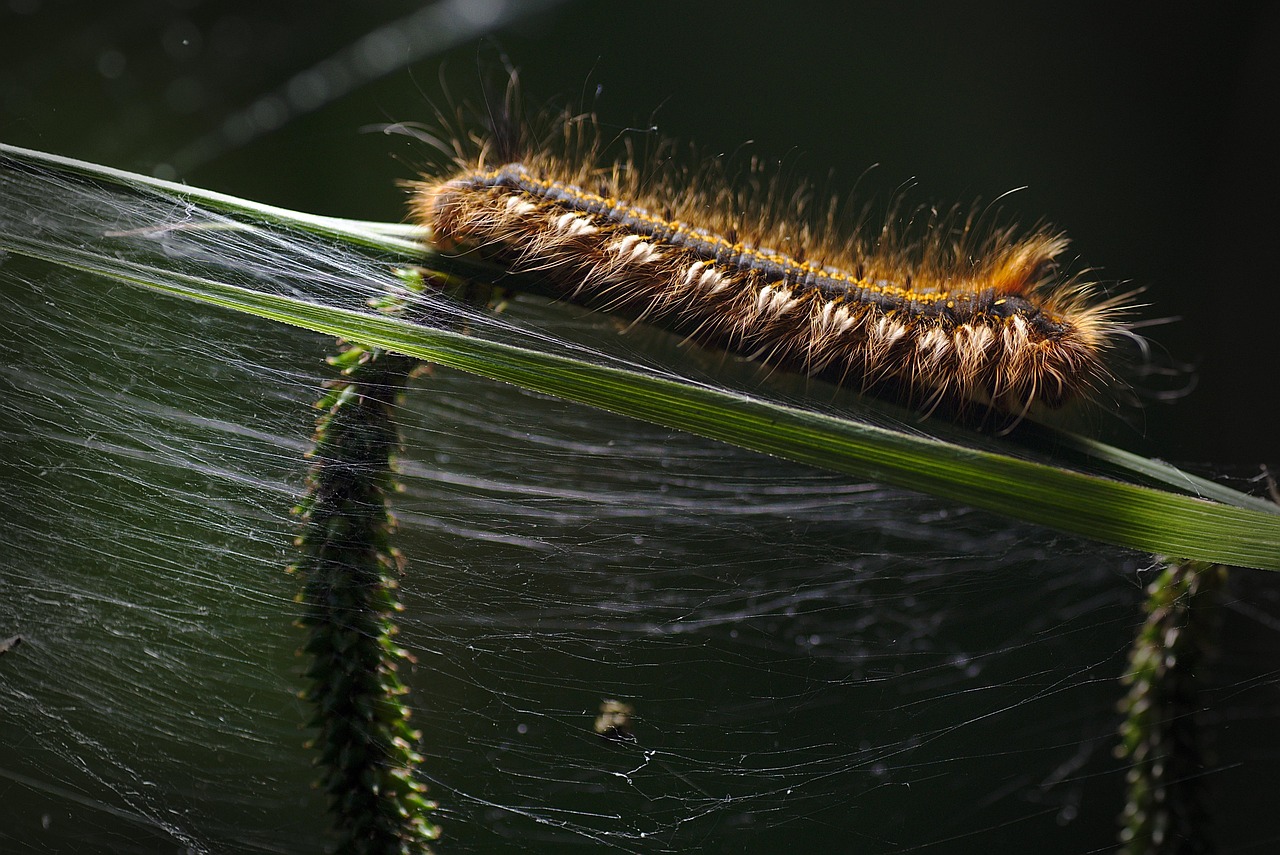Caterpillars are fascinating creatures that play a vital role in Arizona’s ecosystem. These desert crawlers come in various shapes, sizes, and colors, making them intriguing for nature enthusiasts and researchers alike. Understanding how to identify these caterpillars can enhance your appreciation of the desert environment.
Arizona is home to a diverse range of caterpillar species, each adapted to thrive in the unique desert landscape. From the vibrant colors of the Painted Lady caterpillar to the camouflaged forms of the Horned Toad caterpillar, recognizing these species can be both educational and enjoyable. Additionally, many caterpillars undergo metamorphosis to become beautiful butterflies or moths, further adding to their allure.

These larval forms are essential to the life cycle of butterflies and moths. They feed voraciously on various plants, contributing to the local ecosystem by aiding in plant reproduction and serving as food for other wildlife. Understanding their characteristics can also aid gardeners and conservationists in promoting healthy habitats.
Common Arizona Caterpillars
In Arizona, several caterpillar species are commonly observed. Each has distinct features that make them easy to recognize. Below are some notable examples:
| Caterpillar Name | Description | Host Plants |
|---|---|---|
| Painted Lady Caterpillar | Green with orange and black markings. | Thistles, mallows, and other flowering plants. |
| Hummingbird Moth Caterpillar | Large and green with a horn-like projection. | Various flowering plants, especially those with tubular flowers. |
| Horned Toad Caterpillar | Flat body with spiny protrusions for camouflage. | Cacti and other desert plants. |
| Woolly Bear Caterpillar | Covered in dense hair, typically black and orange. | Various grasses and herbaceous plants. |
Identifying these caterpillars involves observing their physical traits and understanding their preferred habitats. Coloration, size, and the presence of distinctive features such as horns or hairs can help distinguish one species from another.
Moreover, many Arizona caterpillars exhibit specific behaviors that aid in their survival. For instance, some caterpillars may mimic twigs or leaves to evade predators. Others may have warning colors that signal their toxicity or unpalatability to potential threats.
As you venture through the Arizona landscape, look for these intriguing insects on your hikes or in your garden. Not only will you enjoy the beauty of their forms, but you will also gain insight into their roles within the ecosystem. Observing their life cycles can provide a deeper appreciation for nature’s processes.
In addition to visual identification, understanding the caterpillars’ life cycle stages—egg, larva (caterpillar), pupa (chrysalis), and adult (butterfly or moth)—is crucial. Each stage plays a pivotal role in their development and survival. The larval stage is particularly important as it is when they consume food to store energy for metamorphosis.
By learning about Arizona’s caterpillars, you can contribute to conservation efforts and help promote biodiversity. As you explore this enchanting aspect of nature, remember that every caterpillar has a story worth telling.
Life Cycle of Arizona Caterpillars
The life cycle of caterpillars in Arizona is a fascinating journey that encompasses several distinct stages. Each stage serves a specific purpose and plays a critical role in the caterpillar’s transformation into a butterfly or moth. Understanding these stages can enrich your experience when observing these remarkable creatures.
Stages of Development
The life cycle of a caterpillar typically includes four main stages:
- Egg: The life begins as a tiny egg laid by an adult female butterfly or moth. Depending on the species, eggs are often placed on or near the host plants that the caterpillars will eventually feed on.
- Larva (Caterpillar): After hatching, the caterpillar emerges and begins to consume leaves. This stage is crucial for growth, as the caterpillar may eat several times its weight in a short period.
- Pupa (Chrysalis): Once the caterpillar reaches its full size, it enters the pupal stage. Here, it forms a protective casing, where it undergoes metamorphosis, transforming into an adult.
- Adult (Butterfly or Moth): After completing metamorphosis, the adult emerges from the chrysalis. Initially, its wings are soft and crumpled, but they soon expand and dry, allowing the butterfly or moth to take flight.
Duration of Each Stage
The duration of each stage can vary significantly based on environmental conditions and species. Here is a general overview:
| Stage | Duration |
|---|---|
| Egg | 3 to 10 days |
| Larva (Caterpillar) | 2 to 6 weeks |
| Pupa (Chrysalis) | 1 to 3 weeks |
| Adult (Butterfly or Moth) | 2 weeks to several months (varies by species) |
The larval stage is particularly significant. During this time, caterpillars must consume enough food to grow rapidly. They undergo multiple molts during their larval stage, shedding their skin several times as they outgrow it. This process allows them to increase in size and prepare for the next phase of their life cycle.
Feeding Habits of Arizona Caterpillars

Caterpillars are primarily herbivorous and exhibit diverse feeding habits that depend on their species. Understanding their dietary preferences is essential for identifying them in their natural habitat.
Types of Host Plants
Different caterpillar species have specific host plants they rely on for nourishment. Here are some common host plants for Arizona caterpillars:
- Milkweed: A favorite for species such as the Monarch caterpillar.
- Thistles: Attracts various types of butterflies, including the Painted Lady.
- Mallows: A host plant for several species, providing essential nutrients.
- Cacti: Some caterpillars, like the Horned Toad caterpillar, thrive on cactus plants.
Caterpillars often select plants that offer the best nutritional value. Some species are specialized feeders, meaning they will only eat specific plants. This specialization can make them vulnerable to habitat loss and environmental changes.
In addition to their dietary habits, many caterpillars have developed unique adaptations that help them survive in their environments. For example, some may secrete chemicals that deter predators, while others possess physical traits that provide camouflage against potential threats.
As you learn more about these fascinating creatures, you’ll discover how interconnected their lives are with the plants they depend on and the broader ecosystem. Observing their feeding habits can provide valuable insights into the delicate balance of nature in Arizona’s desert.
Behavioral Adaptations of Arizona Caterpillars


Arizona caterpillars exhibit several fascinating behavioral adaptations that help them survive in the harsh desert environment. These behaviors are essential for evading predators, finding food, and ensuring successful metamorphosis.
Camouflage and Mimicry
Many caterpillars rely on camouflage to blend into their surroundings. This adaptation helps them avoid detection by predators such as birds and other insects. Some common strategies include:
- Coloration: Caterpillars may exhibit colors that mimic the leaves, twigs, or other elements of their environment. For example, the Horned Toad caterpillar’s flat, spiny body resembles a leaf or twig.
- Texture: Some caterpillars possess textures that enhance their disguise. The fuzzy appearance of the Woolly Bear caterpillar can resemble a clump of grass or plant material.
- Posture: When threatened, many caterpillars adopt a defensive posture. They may curl up or flatten themselves against a surface to make it more difficult for predators to spot them.
Defensive Mechanisms
In addition to camouflage, Arizona caterpillars have developed various defensive mechanisms to protect themselves from predators. These include:
- Chemical Defenses: Some caterpillars can secrete toxic substances that deter potential predators. For instance, the larvae of the Lonomia obliqua, known as the Giant Silkworm Moth, produce chemicals that can be harmful if consumed.
- Spines and Hairs: Certain species have evolved spines or hairy bodies that can irritate or harm predators. The spines of the Giant Leopard Moth caterpillar can cause discomfort to those who attempt to eat them.
- Mimicking Toxic Species: Some harmless caterpillars mimic the appearance of toxic species to deter predators. This phenomenon is known as Batesian mimicry and is an effective survival strategy.
Caterpillar Communication
Communication among caterpillars may not be as elaborate as in other animal species, but they do employ several methods to convey information and respond to their environment.
Vibrational Signals
Caterpillars are known to use vibrational signals to communicate with one another. These vibrations can serve various purposes, such as warning of danger or signaling distress. For example, when a caterpillar feels threatened, it may produce vibrations that alert nearby individuals to potential risks.
Chemical Signals
Chemical communication plays a significant role in caterpillar behavior. Caterpillars can release pheromones—chemical substances that affect the behavior of other individuals of the same species. These pheromones can signal readiness to mate or indicate the presence of food sources.
Caterpillar Habitats in Arizona
The habitats of Arizona caterpillars vary widely depending on the species and environmental conditions. Understanding these habitats is crucial for recognizing where to find them and how they interact with their ecosystems.
Desert Environments
Many caterpillars thrive in desert environments where they have adapted to extreme temperatures and arid conditions. Common habitats include:
- Sandy Soils: Some caterpillars prefer sandy areas where they can easily camouflage among the soil and vegetation.
- Vegetation Clusters: Areas with dense vegetation provide food resources and shelter from predators.
- Cacti and Succulents: These plants serve as critical food sources for several desert-dwelling caterpillar species.
The adaptability of Arizona caterpillars to their habitats showcases their resilience and ecological importance. Observing these behaviors in their natural settings can provide valuable insights into their roles within the ecosystem.
Impact of Climate Change on Arizona Caterpillars
As with many species, Arizona caterpillars face significant challenges due to climate change. Rising temperatures, altered precipitation patterns, and habitat destruction can impact their survival and reproductive success. Understanding these effects is crucial for conservation efforts.
Temperature Changes
Increased temperatures can directly affect the life cycles of caterpillars. Higher temperatures may accelerate development, leading to shorter larval stages. While this might initially seem beneficial, it can also result in a mismatch between the availability of food resources and the caterpillars’ needs. If plants do not grow as quickly as the caterpillars mature, it could lead to food shortages.
Altered Precipitation Patterns
Changes in rainfall can have profound effects on desert ecosystems. For instance, excessive rainfall can lead to flooding, which may destroy habitats and food sources. Conversely, drought conditions can reduce plant availability, forcing caterpillars to compete for limited resources. These fluctuations can also affect the timing of life cycles, causing mismatches in the synchrony between caterpillars and their host plants.
Habitat Loss
Urban expansion and agricultural development pose significant threats to caterpillar habitats in Arizona. As natural landscapes are converted into urban areas or farmlands, the availability of host plants decreases. This loss of habitat can result in declining populations and reduced biodiversity.
Conservation Efforts for Arizona Caterpillars
Conservation initiatives play a vital role in protecting Arizona’s caterpillar species and their habitats. Several strategies are being implemented to mitigate the impacts of climate change and habitat loss.
Creating Wildlife Corridors
Wildlife corridors are essential for providing safe passage between fragmented habitats. By establishing these pathways, caterpillars and other wildlife can migrate to find food and mates, enhancing genetic diversity and improving overall population health.
Restoring Native Plant Species
Efforts to restore native plants are critical for supporting local caterpillar populations. Native plants are adapted to the local environment and serve as food sources for specific caterpillar species. Restoration projects often focus on planting these native species in areas where they have been lost due to development.
Education and Awareness
Raising public awareness about the importance of caterpillars in ecosystems is essential for fostering community support for conservation efforts. Educational programs can help people understand the roles that caterpillars play in pollination and food webs, encouraging them to protect these creatures.
Final Thoughts
The diverse world of Arizona caterpillars offers a glimpse into the intricate web of life within desert ecosystems. Their remarkable adaptations, behaviors, and complex life cycles underscore their importance in nature. As we face increasing environmental challenges, it becomes crucial to recognize the significance of these creatures and advocate for their conservation.
By understanding the threats they face—from climate change to habitat loss—we can take meaningful actions to protect Arizona’s unique biodiversity. Observing and learning about these desert crawlers not only enriches our knowledge but also fosters a deeper connection with the natural world around us.
Whether you are a nature enthusiast or a casual observer, taking the time to appreciate Arizona’s caterpillars can lead to greater environmental stewardship. These fascinating insects remind us of the beauty and complexity of life in even the most challenging conditions.
